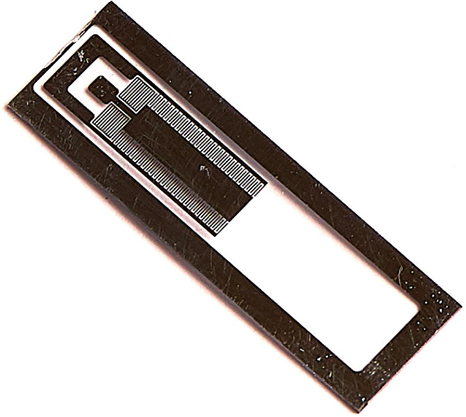Researchers at RMIT University in Australia built a microchip that can induce stem cells to differentiate into bone cells by stimulating them with high-frequency sound waves. The technique lets the researchers create bone cells using stem cells derived from adipose tissue, which are easier to extract than the traditional bone marrow-derived stem cells that are often used in bone tissue engineering experiments. The approach is low-cost and also avoids the growth factors and drugs that are sometimes used to stimulate stem cell differentiation.
Tissue engineering holds great potential for a variety of patients who require treatments to repair or replace damaged tissues or organs, but it has taken longer than researchers had initially hoped to bring viable treatments to the clinic. Stem cells are an important part in the tissue engineering arsenal, but converting them in large numbers into a desired cell type can be expensive and complicated, often requiring incubation in a cocktail of growth factors and/or drugs to achieve the desired effects.
However, stem cells are not just responsive to biochemical cues. They can also be influenced by physical stimuli. This latest technology takes advantage of the mechanosensitivity of cells, which can be influenced by the vibrations caused by sound waves. The stem cells are exposed to high-frequency sound waves within a low-cost microchip, causing them to undergo osteogenic differentiation.

“The sound waves cut the treatment time usually required to get stem cells to begin to turn into bone cells by several days,” said Amy Gelmi, a researcher involved in the study. “This method also doesn’t require any special ‘bone-inducing’ drugs and it’s very easy to apply to the stem cells. Our study found this new approach has strong potential to be used for treating the stem cells, before we either coat them onto an implant or inject them directly into the body for tissue engineering.”

A magnified image showing adult stem cells in the process of turning into bone cells after treatment with high-frequency sound waves. Green coloring shows the presence of collagen, which the cells produce as they become bone cells. Magnification: 60X
Crucially, the technique allows the researchers to create bone cells using stem cells that are derived from fat tissue. Such cells are relatively easy to extract from human volunteers, whereas the bone marrow stem cells traditionally used in bone tissue engineering are painful to extract.
The researchers are still fine-tuning their technique, but their device already lets them achieve a high degree of accuracy when manipulating the cells. “We can use the sound waves to apply just the right amount of pressure in the right places to the stem cells, to trigger the change process,” said Leslie Yeo, another researcher involved in the study. “Our device is cheap and simple to use, so could easily be upscaled for treating large numbers of cells simultaneously — vital for effective tissue engineering.”
Study in journal Small: Short-Duration High Frequency MegaHertz-Order Nanomechanostimulation Drives Early and Persistent Osteogenic Differentiation in Mesenchymal Stem Cells
Via: RMIT University
